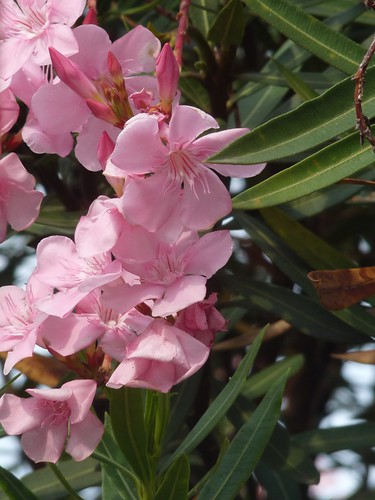Perhaps it’s one of the flowers on this page:
DB, I was at the big Eslite behind the Taipei City Hall MRT station, and in their Plants section I saw a book entitled 台灣植物染圖鑑 (“A Guide to Natural Plant Dyeing in Taiwan”).
Sounds exactly what you’re looking for.
Definitely! Thanks a million, Chris! :discodance:
I saw this the other day. First I thought it was a thrown away leftover of some fruit. Anyone?

I think that plant is some kind of Datura, and should not be eaten or handled. The leaves are unlike any I can find in herbals, but there are several giveaways that show it as a Datura, especially the seed pod that dehisces like that one has. However, the stem and leaves and the prostrate habit look more like a squash of some kind. But Datura are well known for their tendency to grow into all weird kinds of leaf and stem shape, depending on their environment and nutrient and water supply.
Deadly nightshade (aka belladonna) and Jimson weed are other Datura plants. Jimson weed, aka thorn apple (Datura stramonium and D. wrightii) is found in Taiwan, as is Datura metel and I think also D. inoxia (Indian thorn-apple). There are also some tree Datura in the north of Taiwan (Brugmansia suaveolens, escaped ornamental orig. from South America)
Ha, I found it. It is in fact the ripe fruit of the or balsam pear or bitter gourd/melon, the green variety that they call shan1 ku3 gua1 山苦瓜
en.wikipedia.org/wiki/Bitter_melon
freshfromyouryard.org/2009/10/15 … charantia/
hljh.tcc.edu.tw/teach/%E6%A0 … %93%9C.htm
Yup, you got me! it’s a bitter melon (goya here in OKinawa) I never see them in that state: all eaten when green.
Sorry to have steered you wrong (though i had a suspicion it was some kind of squash!)
Actually, it’s not the bitter melon eaten here, but its “cousin.” It’s quite tiny, but just as bitter. Where I’m from a tea is made from the leaves and it’s drunk for all sorts of ailments.
If you ever come across this, don’t eat it. Hell, it’s advisable not to even touch it!
Oleander (Nerium oleander), one of the most poisonous plants on the face of the earth.

For a pretty good list of Taiwan flora books see booksfromtaiwan.com/Flora_Books.html . If you are a long-term or regular Forumosa.com contributor send me a pm for deep discounts. In the middle of compiling addendums for some of the titles (including the 2 below) giving Common (English) names, and key info in English.
I find A Field Guide to Plants in Rural Community published by the Taiwan Endemic Species Research Institute (TESRI) to be excellent - a very good selection of commonly seen Taiwan plants, good images. Bad index if you don’t read Chinese, but still very useful.
For something to carry at all times, the pocket sized Common Trees of Taiwan from Taipei Wild Bird Society does the trick.
For Chinese names:
The first purple flower (morning glory): 牽牛花 qian1niu2hua1. Literally “leading cow (like to pasture or herding) flower.” Not sure why but maybe it climbs everywhere?
The “shy grass” (mimosa pudica): 含羞草 han2xiu1cao3. Literally “shy grass.”
During the last few weeks, I’ve seen hundreds of beautiful red and yellow flowers that are now blooming:
They tend to grow in clusters, like this:
I’ve only seen these flowers very close to the beach, so I guess they probably only grow in sandy soil.
If anyone knows the English name and/or the Chinese name of these flowers, please let me know.
Fire Wheel (Gaillardia Pulchella)
A Field Guide to Wild Flowers of Taiwan in Spring and Summer.
Page 170.
Thanks a lot! Do you know the Chinese name too?
Also, here’s another unidentified wildflower that I saw near the beach last week:
It’s only about 2 cm in diameter.
Does anyone know what kind of flower this is?
I downloaded and tried an app to recognize plants
PlantNet App
Not bad… In most cases, it gave me 3 or 4 creditable choices
It depends mainly on the quality of the photo
A lot of weeds are edible, and highly nutritious.
What is a weed? It’s tough, hardy and grows relentlessly…
I’d also like to know how to identify nettles, kudzu, and various mimosa variants…